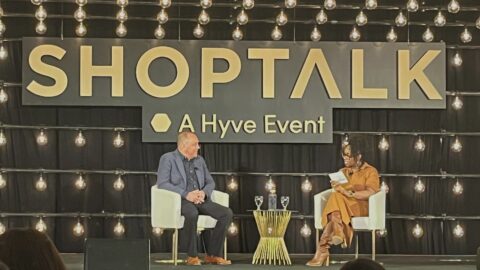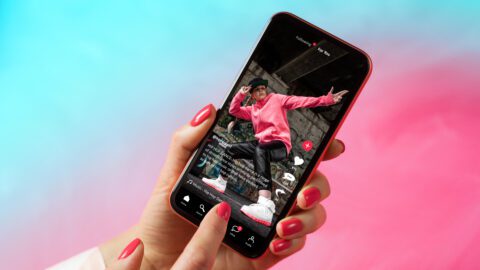This is Part I of the Retail TouchPoints two-part Back-To-School report. This feature highlights strategies, spending trends and predictions for the new school year. Part II, appearing in the August 21 newsletter, will focus on back-to-college trends and BTS money-saving options from Rite Aid, Kmart, Staples and Macy’s.
Retailers continue to seek innovative ways to communicate with consumers to build a compelling cross-channel shopping experience. To help deliver personalized messages, most retailers deploy mobile and social marketing strategies that integrate with e-Commerce sites. This integration offers consumers the capability to connect with brands across their channel of preference to make purchases for timely events, such as the back-to-school (BTS) shopping season.
The 2012 BTS shopping season has the potential to bring in record sales for smart retailers, if industry predictions are correct. In general, BTS is “the second biggest consumer spending event for retailers behind the winter holidays,” according to the National Retail Federation (NRF) in its 2012 BTS spending survey, conducted by BIGinsight.
Other industry sources support this prediction but differ in their forecasts regarding the overall BTS shopping window for 2012 and the role of e-Commerce: Outlooks range from shoppers getting an early start, to delay of completion. They also predict an increase in online spending for BTS clothing and supplies, to using the Internet for showcasing only, with purchases made in-store.
Advertisement
Mobile will play a vital role in the BTS season as consumers seek the best deals on the latest trends. In fact, according to a 2012 BTS report from Deloitte, a majority (65%) of smartphone owners said they would continue to use their device to view price information and retailers’ ads as well as locate a store, This year’s report indicated a 4% increase in consumers who said they will use their device to obtain price information and view retailers’ ads, while 25% said they would use their smartphones to shop online, a 9% increase from the 2011 BTS report.
Spending Predictions
For 2012, people with children in grades K-12 will spend an average of $688.62, up from $603.63 last year, according to the NRF survey. Total spending is expected to reach $30.3 billion, with more consumers shopping online. Although economic challenges continue to be top-of-mind for shoppers, most (40%) consumers said they are purchasing at least one item online, a 30% increase since 2003. NRF predicts the high spending growth this year is due to record levels of elementary and middle school enrollment, with “3 in 10 Americans noting they have children between the ages of 6 and 17.”
“As children contribute more to the back-to-school budget and shoppers act on input from friends and family, retailers need to consider the multiplier effect of each consumer interaction,” said Alison Paul, Deloitte Vice Chairman and Retail and Distribution sector leader. “That should signal retailers to focus on making a customer’s experience with product availability, assortment and service consistent across all digital and store channels.”
In addition, “Moms and dads are sending their children to universities armed with gift cards — 37.9% of college shoppers are expected to spend an average of $71.23 on gift cards or pre-paid cards,” NRF reported.
“The budget-conscious consumer has not forgotten about price, quality or value; we’re merely seeing a more savvy shopper,” said Pam Goodfellow, Director of BIGinsight Consumer Insights. “There’s no question consumers have become more practical in their shopping, and with school purchases oftentimes considered a necessity, parents have likely been saving and scrimping to be able to fully afford all of their children’s needs for upcoming school year.”
Parents’ spending habits also indicate a positive approach to the holiday shopping season. The NPD Group, a market research company, stated in a July 24, 2012, press release that BTS spending will increase by 9% for 2012. “Parents are willing to spend more this year, and are willing to sacrifice their own needs in order to afford the right [BTS] tools,” Marshal Cohen, Chief Industry Analyst for The NPD Group, told Retail TouchPoints. In addition, “they are willing to stretch their budgets further, an encouraging sign for back-to-school as well as for the balance of the retail season, particularly the holiday shopping season.”
NPD’s findings are based on a poll of 2,500 U.S. adults, conducted in early July 2012. Results were used to create NPD’s 2012 Back-to-School Spending Intentions Report, which was summarized in the recent press release.
The 2012 BTS Shopping Window
The NPD study also reported that shoppers will complete their BTS shopping later this year, by September 1, due to summer travels, the Summer Olympics, and other factors.
“There are two main issues distracting and delaying the shopping season: the fact that this is a major election year, with an unpredictable future, and weather conditions that have been unseasonably warm,” said Cohen. “In addition, the warmer weather is lasting longer and later into the season.” Weather impacts consumers’ BTS shopping patterns because, due to tighter budgets, people are creating more local-level vacations and are spending more time driving to their destinations,” Cohen stated. He said all these factors are distractions causing consumers to shop later.
In addition, said Cohen, the Summer Olympics have distracted consumers from shopping earlier, further delaying the BTS season by approximately two weeks.
BTS consumers will be programming their purchases over time, Cohen added. He highlighted three key purchasing segments for this year:
- Primary products such as basic school supplies;
- Technology, such as calculators, and one or two “power clothing outfits;” and
- Additional BTS items, following the onset of high school and college classes.
“This year parents are holding off on the fashion side of the BTS equation until after school season starts,” noted Cohen. “We’re seeing the BTS fashion season stretch even further than it has traditionally for other back-to-school seasons.”
The Role Of E-Commerce In BTS Shopping
Consumers are shopping in different types of retail outlets this year, noted NPD, which reported a 6% increase in department store visits and a 7% spike in the specialty footwear segment.
But, online shopping trends are up for debate between NPD and NRF. “While the online retail experience continues to grow at the greatest pace of any channel distribution, the exception is the back-to-school shopping segment,” said Cohen. He reported that the Internet will be leveraged more for showcasing this year: “Parents are using online tools to ‘pre-search’ the best deals for products prior to making trips to physical stores. We especially see this happening on the local level, at stores posting teachers’ back-to-school shopping lists.”
In contrast, the NRF BTS spending survey reported that savvy shoppers are seeking to manage expenses by shopping online and comparing prices across eTailers. “More families said they will shop online for school items,” said Shay, “as they look to get the best bang for their buck.”
Additional findings from the NRF report include:
- Nearly 60% of shoppers will take advantage of department stores’ private label offerings and exclusive product lines
- Parents plan to scour the Internet for free shipping and other promotions; and
- Close to 40% said they will do their BTS shopping online.
To help understand why consumers choose to compare prices online, FreePriceAlerts, a New Hampshire-based automatic price search engine, conducted a study using a fourth-grade BTS shopping list. The study compared school supplies between Walmart, Staples and a variety of eTailers, concluding that online shopping for school supplies can help consumers save up to 19%, with shipping costs included.
Target And IKEA Reach Students With Mobile, Social Strategies
Mobile shopping is on the rise for the 2012 BTS season, according to Deloitte’s “2012 Back-to-School Survey: Sharpening up for the new year.” Smartphone owners will use their mobile devices to comparison shop, browse reviews and find deals. Additional findings from the survey state that these consumers will be:
- Accessing price information (62%);
- Downloading coupons and discounts (45%);
- Viewing retailers’ ads (44%); and
- Locating a specific retail store (38%).
Mobile-equipped consumers also will frequent physical stores, stated the report, with only 25% of consumers saying they will shop online via their handsets, and fewer (14%) will make an online purchase via mobile.
To simplify BTS shopping, retailers are using mobile applications and social strategies to help consumers find items and save on the latest trends. Target, for one, has launched a mobile BTS campaign to educate students on its array of clothing and school supplies.
“The back-to-college season is very important to Target,” said Kath Lohmuller, a spokesperson for Target. “It’s one of our busiest times of the year, and gives us the opportunity to build relationships with college-age students.”
As part of the goal of relationship building, Target planned close to 70 private shopping events during Welcome Week festivities for university freshman around the country. “We have created a Bullseye Badge QR code that will help us communicate with students before, during and after these BTS shopping events,” noted Lohmuller. “By scanning a unique QR code for each event, students will receive information, special deals and other communications specific to their schools, directly to their mobile phone.”
Target also incorporated social media web sites such as Facebook, Twitter and Pinterest into its BTS strategies, in order to engage students during the private shopping events.
Swedish furniture retailer, IKEA, has introduced its new interactive promotion through mobile ads that redirect consumers to a landing page with BTS products and a shopping checklist. IKEA also is adding social to the mix by incorporating Facebook and Twitter tabs to connect with consumers on a deeper level.
“Mobile sites and branded native apps will provide extended commerce capabilities as well as effective assisted selling tools for product research,” said Scott Forshay, a mobile and emerging technology strategist for eMarketing company Acquity Group. “They efficiently synchronize the on- and off-location experiences of consumers and tilt the balance of power in favor of those retailers prepared to take advantage of the mobile opportunity.”
“Retailers know they can’t afford to leave mobile out of the marketing mix, especially in their brick-and-mortar stores,” Paul said. “However, there is still some conventional wisdom that suggests mobile use is a threat due to showrooming. This is challenging retailers to figure out how to use mobile to their advantage, without endangering sales.”
Retailers cannot prevent consumers from shopping in brick-and-mortar stores armed with nearby competitors’ prices. “Consumers want to interact,” Paul said, “and the smartest retailers will respond with tailored marketing as well as their own mobile applications that extend the retail experience to the consumer regardless of location, proactively engage the customer, and insulate them from competitors.”
Part II of the Retail TouchPoints Back-To-School feature will look at back-to-college trends as well as various BTS money-saving options from Rite Aid, Kmart, Staples and Macy’s. Part II will appear in the August 21 newsletter.














